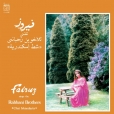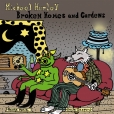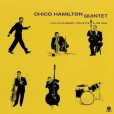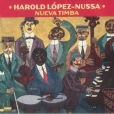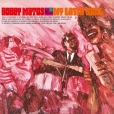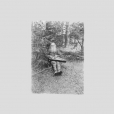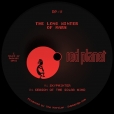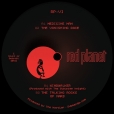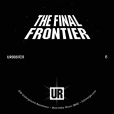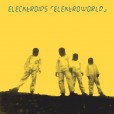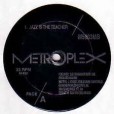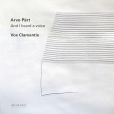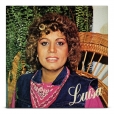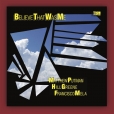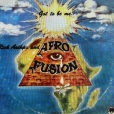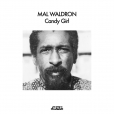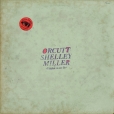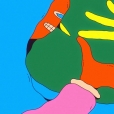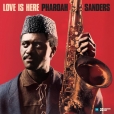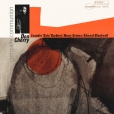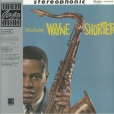Your basket is empty

Honest Jon's has enrolled with the European Union 'Import One-Stop Shop'. For EU customers, this means that you will not be charged any additional VAT or duty, nor any handling fees. No further costs.
Lamin Fofana
Works In Metal
Honest Jon's Records
Scintillating, alchemical kosmische; visionary, deep, and luminous; and beautifully sleeved, with gold foiling and silver ink.
Works In Metal fans out a set of acid treatments and finely sharpened blades — cutting, shaping, suspending form. Sounds are melted down and forged as if liquid metal.
The works are paired. Arc’s Blue Flame previews the smoking volatility at the album’s core. Echoes and resonance soften the dissonant, bright textures; all overlaid with Fofana’s signature, percussive kick drums. Welding drills into the discordant thrills and spills of metamorphosis. Sparks fly and the bittersweet arc of change unfolds.
Fofana discreetly folds in text, poetry, and field recordings, spooring their decomposition and recomposition with a prismatic point of view. The coupling Obscure Light (Decomposition) and Obscure Light (Recomposition) marks something new in his music. The pulse is brightly honed, cascading beyond the dancefloor, exultingly eluding musical genre.
Works in Metal is perhaps Fofana’s most narrative album. At its heart is the killer, extended Lure of the Fragment / So Another Sound Suggests Itself. Melodies circle in call-and-response patterns, balancing proximity and distance, signalling the inward gravity required to work with metal. A nested story-line, with birds flying in; an album within an album. Dredging up memories and associations, Fofana filters in selections from his sound-archives. Layered with synths, field recordings become instruments in their own right. The last three minutes proffer precious clarity — a memory, in miniature, flashed onto molten metal.
In 1943 Suzanne Césaire declared that ‘our surrealism will then supply them the leaven from their very depths. It will be time finally to transcend the sordid contemporary antinomies: Whites-Blacks, Europeans-Africans, civilized-savage: the powerful magic of the mahoulis will be recovered, drawn from the very wellsprings of life. Colonial idiocies will be purified by the welding arc’s blue flame. The mettle of our metal, our cutting edge of steel, our unique communions — all will be recovered’. Works in Metal is a tribute to her prophecy; its enactment, sculpted in sound.
Blending fast, percussive cumbia rhythms with surf-style electric guitars, these are Los Zheros’ best recordings, brought together for the first time. Their highly-sought-after hit Cuarto Oscuro is here — Amazonian-Peruvian cumbia dosed with garage and psych. The insert contains never-before-seen photos of the band, besides expert notes.
The Latin Jazz classic from 1969, huge on the Dingwalls scene back in the day for the sizzling dancer Tema De Alma Latina.
Stone classic Detroit techno.
‘A lost 1975 session by the great pianist Mal Waldron, recorded in Paris with core members of the mighty Lafayette Afro Rock Band.
‘By 1975, Waldron was a decade into his self-imposed exile from the United States, having reassembled his sound after a devastating breakdown in the early ‘60s. His post-1969 output stripped jazz down to its core elements: modal intensity, locked grooves, and hypnotic repetition. Candy Girl doesn’t interrupt this trajectory—it extends it, wrapping Waldron’s minimalist mantras around the funked-up chassis of the Lafayette rhythm section.
‘Originally released in microscopic quantities on the Calumet label and long shrouded in obscurity, Candy Girl was recorded spontaneously in the studio of producer Pierre Jaubert, whose Paris HQ had become the workshop for both avant-garde jazz (Archie Shepp, Art Ensemble of Chicago, Steve Lacy) and psychedelic funk (Lafayette Afro Rock Band AKA Ice). This session finds Waldron jamming freely with bassist Lafayette Hudson, drummer Donny Donable, and keyboardist Frank Abel on clavinet, Moog and more—laying down raw, unfiltered instrumental funk with an experimental edge.
‘Highlights include the low-slung vamp of Home Again, the crisp, break-laden groove of Red Match Box, and the mesmeric swirl of the title track Candy Girl — a minor-key electric piano waltz with hints of cosmic soul. The sombre yet meditative Dedication To Brahms deconstructs the composer’s third symphony into a sparse jazz reverie.’
A harum-scarum bloodbath of sixties rock, seventies motorik-fusion, and eighties punk.
‘The landscape Orcutt Shelley Miller inhabits lies deep in the stoner American bedrock, fed by volcanic riffage and hypnotic phrasing with rhythmic nods to the SoCal ’60s and atonal slash piled on a mid ’80s SST punk-fusionoid substrate, ultimately blasting a ‘big rock statement’ that treads the line between good times and blown minds.’
‘A deeply expressive, stylistically expansive performance. The set opens with a meditative improvisation on pipe organ, followed by the sweeping three- part suite Love is Here, the driving pulse of Pharoah’s ‘Blues, and a transcendent reading of I Want to Talk About You. Coltrane’s influence is honoured through high-octane renditions of Moment’s Notice and Lazy Bird, before reaching an ecstatic, participatory climax with Love Is Everywhere, shared joyfully with the audience.’
Twenty-page booklet.
DC’s first album as leader, after leaving the Ornette Coleman Quartet. Two side-long suites, recorded in single takes on Christmas Eve, 1965. Bristling with creativity, rammed with great tunes and brilliant solo spots. Cherry plays cornet, alongside Gato Barbieri, Henry Grimes and Ed Blackwell. In the same year as his own debut as leader — The Call for ESP — Grimes is terrific.

